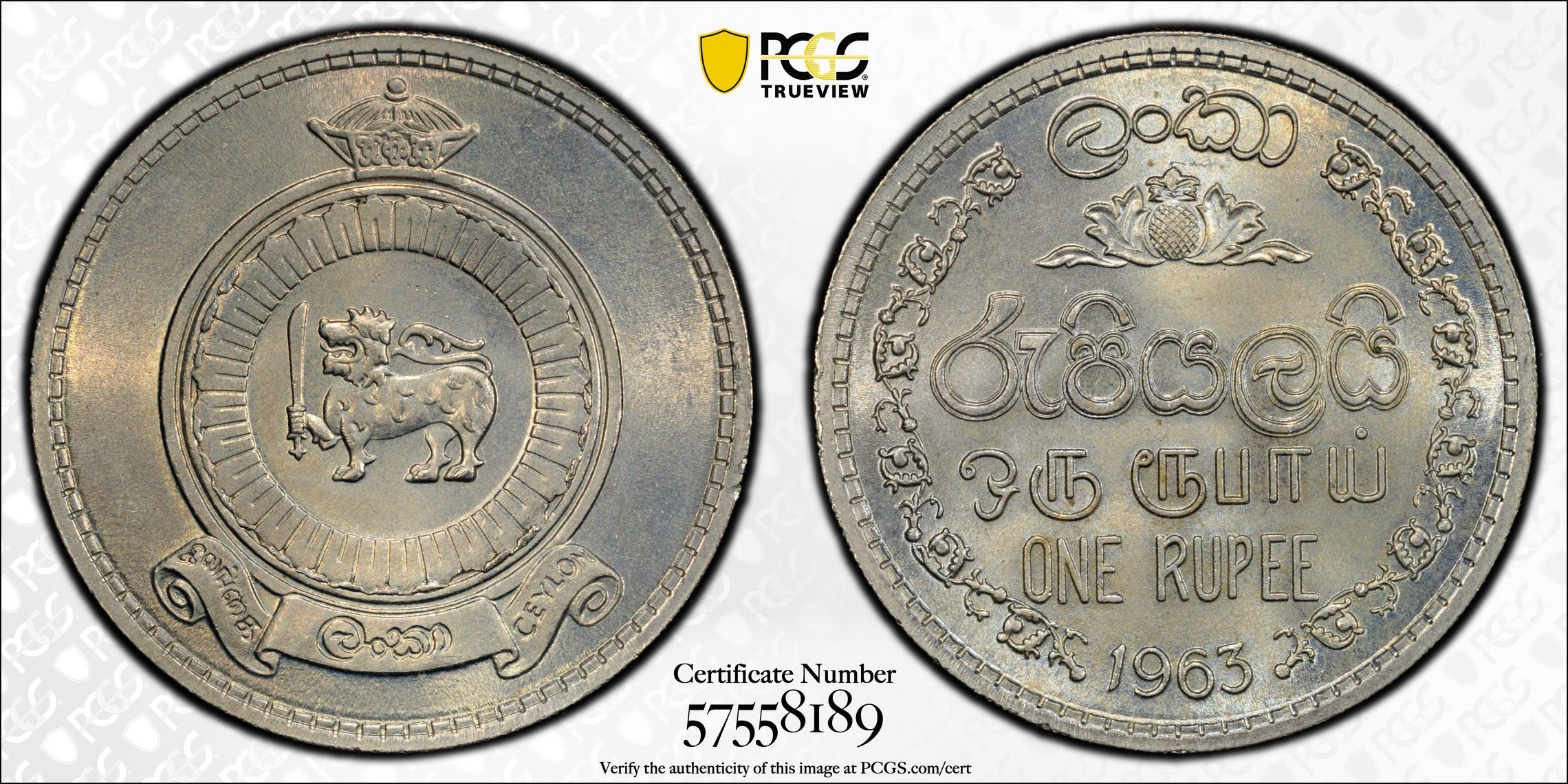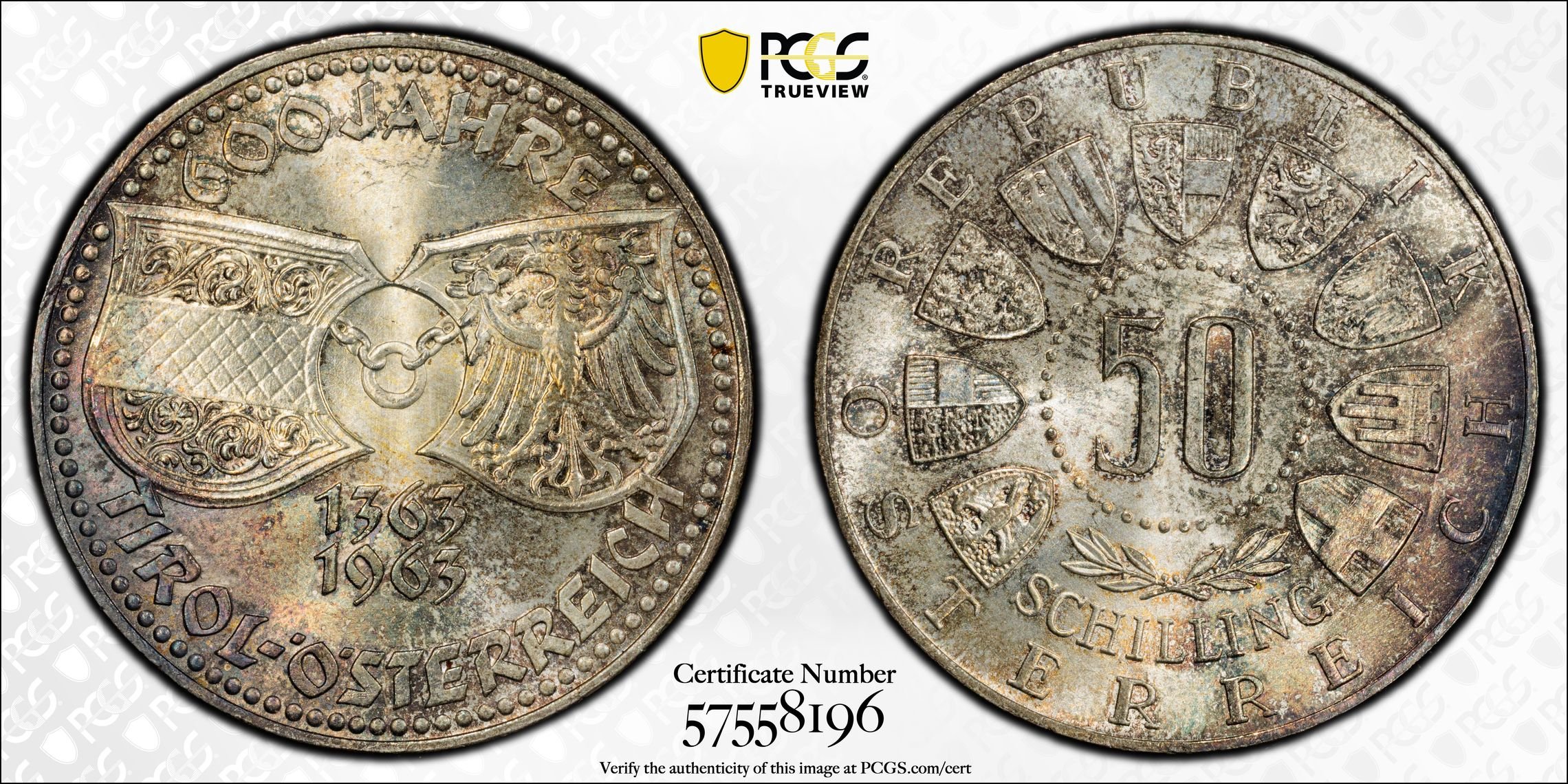PCGS Price Guide/Values for World Coins….What’s the process?
 MEJ7070
Posts: 315 ✭✭✭✭✭
MEJ7070
Posts: 315 ✭✭✭✭✭
Yesterday I received grades and TVs back from our hosts for a small World Economy submission. A bunch of widgety stuff but high grade and with nice eye appeal, so I said what the heck and sent them in along with some separate US material orders.
As I’m entering the coins into the PCGS registry app, I was surprised to see that my freshly graded 1963 Ceylon rupee is apparently worth $110,000 ![]() Either the guide is slightly off by around $109,950ish or this is perhaps Greatest Coin Purchase of All Time.
Either the guide is slightly off by around $109,950ish or this is perhaps Greatest Coin Purchase of All Time.
I’m also the very proud owner of the world reknown 1963 Austrian 50 Schilling. Though only valued at a paltry $3,250, it’s scarcity of just under 3,000,000 minted clearly has collectors falling over themselves worldwide ![]()

Anyways, I’ve added lots of world coins to my PCGS registry, and I love the app. This morning was the first time I’ve encountered such a glitch. Got me wondering what cause this to happen, since my 18th century crowns and Reales that are actually worth something never have a value attached to them when I add them to the registry.
Comments
Nice coins, run to sale!!!!!!!
To attempt to answer the question posed by the thread title, it's my observation, and by extension, assumption that list prices in these guides are for all intents and purposes just "made up".
Nice coin by the way.
Oh I definitely agree with you……..
I guess my next questions would be:
-How does anyone making up the price arrive at $110,000?
-Why do only 2 out of hundreds of PCGS world coins in my inventory have made up prices?
These really aren’t meant to be serious complaints against PCGS, just a head scratcher that I actually found pretty hilarious.
….and thanks!
Beats me, because the biggest mystery to me is how Krause came up with prices for coins that never sold publicly and might not even exist.
It's also quite interesting how prices for an entire series (South Africa Union) didn't change for at least 12 years. (Yes, that's what I have in my 1998 20th century edition and the electronic 2010 for Africa.) Given the bubble and price crash, some of those 1998 prices might actually be correct now.
Examples?
There is (or was) a 1953 South Africa Matte Proof crown which isn't listed in the South Africa guides. Can't remember if it had a price but collectors in that country have never heard of it.
I'd love to buy the at least two 1752 Peru 4R for the Krause list of $1000 and whatever the other one is when only one is rumored to exist but not confirmed. Pretty neat trick to be able to come up with prices for two grades when apparently there is at most one, right? (The recorded mintage is 81 but it's not in Krause.)
Similar for the South Africa 1933 circulation strike farthing and Bolivia 1882 and 1889 50C. The last two might actually exist but never heard of one. (Norweb owned the listed 1887. So, there's at least one of those, in MANTIS.)
Not easily answered because there are/were many different contributors. I even did for a while. I won't divulge which area btut suffice it to say that I had equal or better information to go on than did some better known guides. I did take into account auction prices and used "similars" to get some type of relative estimate in the area I covered.
Not sure if there were any significant changes after 2016 or so in most areas but obviously can not speak for all of them. Also, I had extensive coverage and photos of extremely rare to unknown patterns that Krause chose not to use. I will leave it at that.
Overall, I think or at least IMHO most prices are to at least give readers some sort of idea of relative rarity and at leas on occasion, worth.
Well, just Love coins, period.
For the coins I know best, it was/is mostly incorrect on pretty much everything and only mostly correct on the ranking for South Africa. It's pretty hard to even know relative rarity when most of coins virtually never sell or only sell in quality most collectors don't really want.
From what I can determine, Krause was/is probably "accurate" on lower priced coinage with more frequent transactions, but that wouldn't apply with eBay which I consider to be the most accurate indicator of market value. The price is accurate in the sense that many collectors potentially believe it's the actual market price (or don't care) and dealers use it to price inventory or as their reference point for pricing. It's accurate in a backwards sort of way.
If you can find a buyer ... SELL!